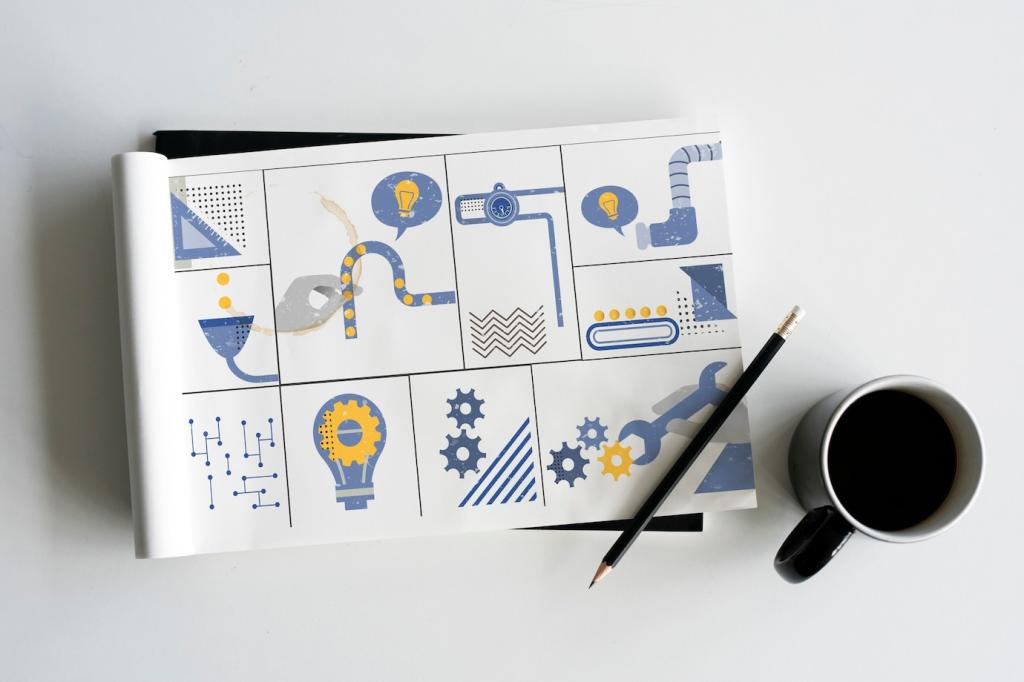Persuasive Product Descriptions in Interior Design: From Objects to Atmospheres
Chosen theme: Persuasive Product Descriptions in Interior Design. Welcome to a space where words shape rooms. Learn how to translate finishes, textures, and forms into feelings that turn quick scrolls into confident selections. Subscribe for weekly, design-led persuasion tactics.
The Psychology Behind Desirability
Listing materials is necessary; evoking a mood is persuasive. Instead of “oak veneer,” try “quiet, grain-kissed oak that softens morning light,” connecting to sanctuary, calm, and intention—outcomes shoppers truly crave in interior design products.
Effective interior design copy nudges readers to picture placement, use, and compliments. Describe the first morning with the lamp lit, the way the switch clicks, and how shadows outline favorite books on the console.
Persuasive descriptions answer unspoken doubts before they arise. Clarify dimensions, cleaning, and weight in plain language, and frame them as freedoms—easier upkeep, thoughtful proportions, and sturdiness that preserves the designer’s original silhouette over time.




Benefits-First Structure That Converts
Open with the room’s before-and-after. “Transform a cramped breakfast nook into a radiant corner ritual,” then segue to compact depth, leg clearance, and durable lacquer. The promise captivates; the details close the loop.
Benefits-First Structure That Converts
Specificity earns trust: “solid ash frame, mortise-and-tenon joints, GREENGUARD Gold finish.” Pair technical truth with relatable contexts—busy kitchens, sunlight exposure, rental walls—so benefits feel personal rather than abstract claims hovering over beautiful imagery.
Benefits-First Structure That Converts
Micro-clarifications remove hesitation. Translate millimeters to everyday objects, offer compatible bulb types, and explain why a curved edge prevents bag snags. Each tiny insight earns momentum toward confident, happy interior design purchases.

Finding a Room-Ready Voice
Blend editorial elegance with grounded clarity. Avoid cluttered metaphors; choose verbs that suggest movement—“gathers,” “settles,” “anchors.” The right voice feels like a trusted interior designer walking you through possibilities without pretense or pressure.

Naming That Sparks Imagination
Names should suggest mood and placement: “Midnight Arch Sconce,” “Coastline Lowboy,” “Studio Quiet Chair.” One boutique saw add-to-cart lift after renaming items with place-and-time cues that invite stories, not just styles or SKUs.

Consistency Across Collections
Keep stylistic rules steady—capitalization, materials order, color phrasing—so shoppers glide between products. Consistency signals design rigor, allowing the persuasion to come from lived details rather than disjointed, attention-grabbing tricks.

SEO That Honors Design
Treat keywords like finishes—select a few, layer naturally. “Modern oak sideboard,” “matte brass pulls,” “storage for dining rooms.” Fluid placement keeps rhythm and readability, preserving the persuasive mood interior design deserves.
Ethical Persuasion and Trust
Honesty as Strategy
Name trade-offs without apology: “The marble top will wear with grace; use a coaster for wines.” Clear guidance aligns values, proving the description protects both the design’s integrity and the buyer’s long-term delight.
Care, Maintenance, and Longevity
Turn care into pride. “Wool refreshes with a weekly shake; rotate seasonally to preserve pile.” Practicality framed as stewardship helps persuasive product descriptions in interior design feel respectful, helpful, and beautifully real.
Invite Conversation, Not Pressure
Encourage readers to ask about room constraints, finishes, or installation. “Message us your floor plan for tailored advice.” Subscribe for more micro-guides, and share questions so future posts refine the craft together.
